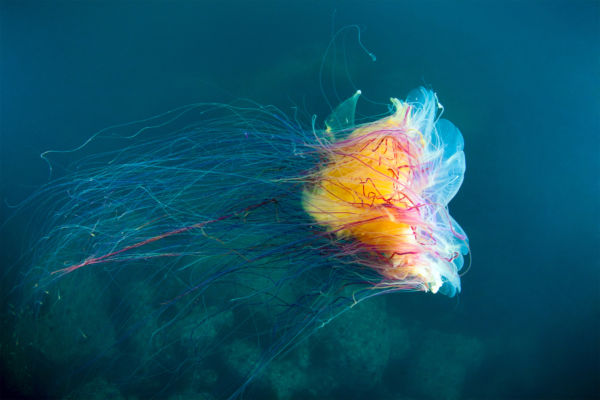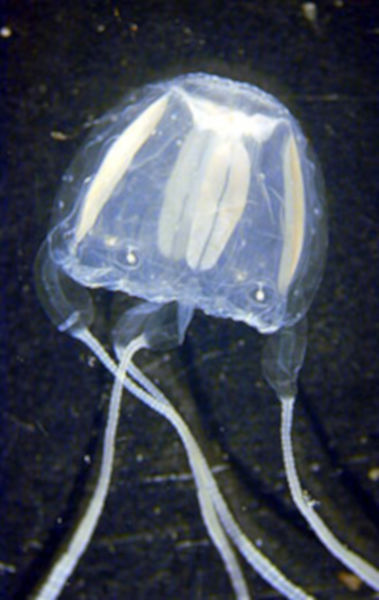Weird and wonderful…and often stingy! Jellyfish have a bad reputation, but they look so pretty while they sinuously move through the water column. Living all over the world, from shallow to deep seas, there are over 2,000 known species as of today. They have been on the planet for at least 500 million years, which makes them one of the oldest animals on Earth. Here we’ll take a peek at five of the coolest.
The longest

There is still debate among the scientific community about which jellyfish is the largest. The longest is for sure the lion’s mane jellyfish, also sometimes called the giant jellyfish, whose tentacles can extend to more than 115 feet (35 m). Their body (called a bell) can be up to 6.5 feet (2 m) in diameter.
Lion’s mane jellyfish inhabit enjoy cold waters of the Arctic, Atlantic, and Northern Pacific Oceans, mainly in open water. Their sting can be painful although not fatal to humans. They use their very long tentacles to capture and pull in fish and other sea creatures they eat.
The smallest (and deadliest)

One of the smallest species is also one of the deadliest: the Irukandji jellyfish belongs to the venomous family of box jellyfish (which also includes the sea wasp jellyfish, in the run for the deadliest as well). This name actually covers over a dozen species, including one commonly named the kingslayer jellyfish.
Only up to 0.39 inches (10 mm) large, they get their name from the symptoms their powerful sting provokes, known as Irukandji syndrome. Symptoms include severe muscle cramps and back pain, headache, nausea, tachycardia, and vomiting, which generally appear 20 to 30 minutes after being stung. Hospitalization is necessary, as those symptoms and the human body’s reaction to its venom can provoke to cardiac problems. The Irukandji only live in northern waters of Australia.
The deepest
In 2016, a scientific expedition from NOAA came across this weird looking creature…at 12,100 feet (3,700 m) deep near the Mariana Trench. So little is known about this species that hasn’t even been named yet, as it was the first time it was seen and recorded. From observations, scientists noted the two sets of tentacles and the bright coloration inside.
The weirdest
Jellyfish not only do not have hearts or a brain, but some of them also have a strange appearance—even for a jellyfish. The bloodybelly comb jellyfish (how cool is that name!) is definitely one of the strangest looking ones around.
Found in deep waters, they are nearly invisible without artificial lights, as the deep red color disappears at depth. But their rows of cilia (like small hair), which they use to propel themselves in the water, have an amazing iridescence that makes them incredibly weird and beautiful to watch. They do not sting and are not harmful to humans…and we probably can’t reach them anyway, because they’ve only been found in very deep water so far.
The rarest
Only discovered in the 60s and since then only seen a handful of times, we know very little known about Deepstaria Enigmatica jellyfish (named after the submarine Deepstar, used by French explorer Jacques Cousteau, who recorded the first sighting of this strange species).
It looks like a trash bag or some sort of ghost, hovering in the water with no visible tentacles. It also has some shapeshifting talents, as can be seen in the video. Scientists believe it might be extending its body to capture nearby prey. It has only been seen in the deepest waters of the ocean during submarine exploration.

